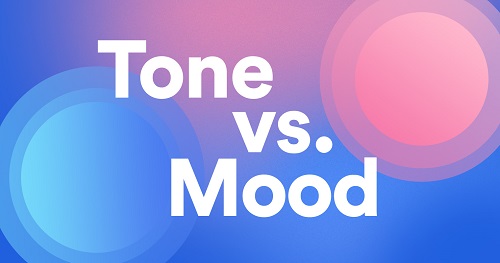Table of Contents
Tone & Mood: How to distinguish these two?
When telling similarities between tone and mood, we can easily find out the answer. Both tone and mood are used by authors in literary works and related to emotions. However, many people often confuse these two words and can not use them in the right context. They simply think that tone and mood have the same meaning. If you have the same ideas as them, this article is worth reading. Here you will find the main differences between tone and mood when discussing literature. Moreover, there are also several practical examples that will help you better understand tone and mood.

What is the definition of Tone?
In literature, tone refers to the attitude that the authors created in their stories. It also reflects the authors’ opinion or conveys the feelings of a certain character. To convey tone, authors can make use of word choice, punctuation, or sentence structure. In writing, there exists a positive, negative, or neutral tone. Even official and technical texts have a tone to them. For example, the tone in “Gone with the wind” can be seen as serious while addressing the characters. The narrator, on the other hand, condemns the characters for being overly serious.
The tone is determined by the author’s feelings about the place or character, as well as what he wants readers to feel. To illustrate, if the author describes a character like this “We had just received the results of the final test and I saw her singing and dancing on her way back home.”, he implies that Anna was very happy because of her good result.
Examples
- He looked solemn due to the death of his best friend.
- I felt nostalgic when talking about our childhood.
What is the definition of Mood?
Whereas tone denotes the author’s point of view, the mood is the atmosphere or the emotional setting created by a piece of literary work and the overall sense it sends to the reader. The purpose of setting the mood is to affect the reader mentally and emotionally. Authors also set the mood to help them in creating a sense of the story. Different literary aspects, such as the setting (physical place), the narrator’s tone, and the choice of words, can all help to generate mood. For instance, the mood created in “Bleak House and Hard Times” can be seen as bleak and compelling, which was expressed by figurative language and literary conventions. This was helpful in allowing the reader to experience whatever feeling the work generates.
Unlike tone is determined by how the reader feels. The authors often create the atmosphere at the start of the story so that the reader knows what to expect later. To illustrate, in a literary work, the author may write “They came into the haunted house. It was so quiet there”. Despite the fact that there is no mention of anyone feeling scared, the reader is likely to get this atmosphere.
Examples
- I am so excited about tomorrow’s trip.
- I can’t sleep when thinking about tomorrow’s trip.
To summarize, you may determine the tone of a literary work by looking at the words used by the author. The mood, or atmosphere that a text produces, on the other hand, is determined by how you feel as a reader after reading what the author has written.




